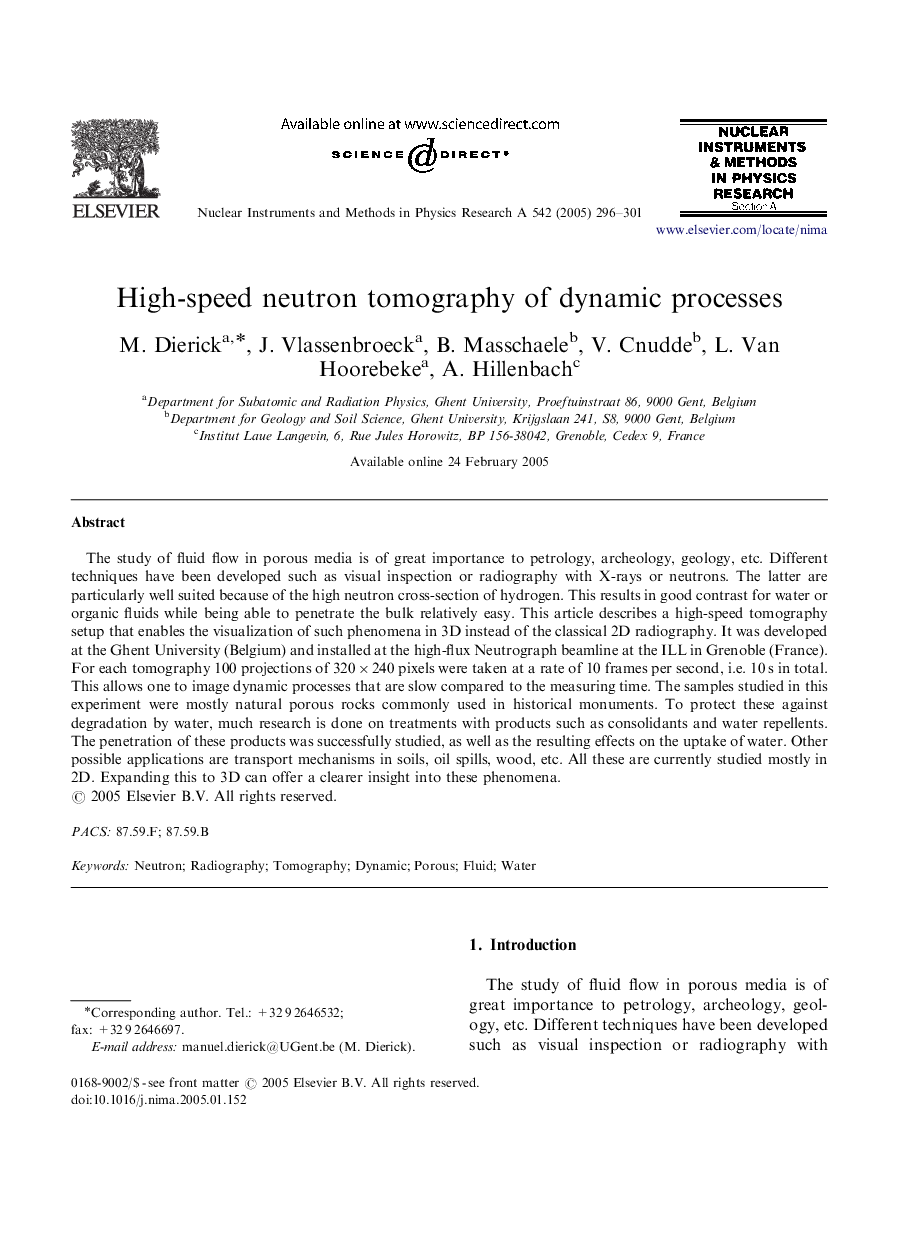| Article ID | Journal | Published Year | Pages | File Type |
|---|---|---|---|---|
| 9845597 | Nuclear Instruments and Methods in Physics Research Section A: Accelerators, Spectrometers, Detectors and Associated Equipment | 2005 | 6 Pages |
Abstract
The study of fluid flow in porous media is of great importance to petrology, archeology, geology, etc. Different techniques have been developed such as visual inspection or radiography with X-rays or neutrons. The latter are particularly well suited because of the high neutron cross-section of hydrogen. This results in good contrast for water or organic fluids while being able to penetrate the bulk relatively easy. This article describes a high-speed tomography setup that enables the visualization of such phenomena in 3D instead of the classical 2D radiography. It was developed at the Ghent University (Belgium) and installed at the high-flux Neutrograph beamline at the ILL in Grenoble (France). For each tomography 100 projections of 320Ã240 pixels were taken at a rate of 10 frames per second, i.e. 10Â s in total. This allows one to image dynamic processes that are slow compared to the measuring time. The samples studied in this experiment were mostly natural porous rocks commonly used in historical monuments. To protect these against degradation by water, much research is done on treatments with products such as consolidants and water repellents. The penetration of these products was successfully studied, as well as the resulting effects on the uptake of water. Other possible applications are transport mechanisms in soils, oil spills, wood, etc. All these are currently studied mostly in 2D. Expanding this to 3D can offer a clearer insight into these phenomena.
Related Topics
Physical Sciences and Engineering
Physics and Astronomy
Instrumentation
Authors
M. Dierick, J. Vlassenbroeck, B. Masschaele, V. Cnudde, L. Van Hoorebeke, A. Hillenbach,
